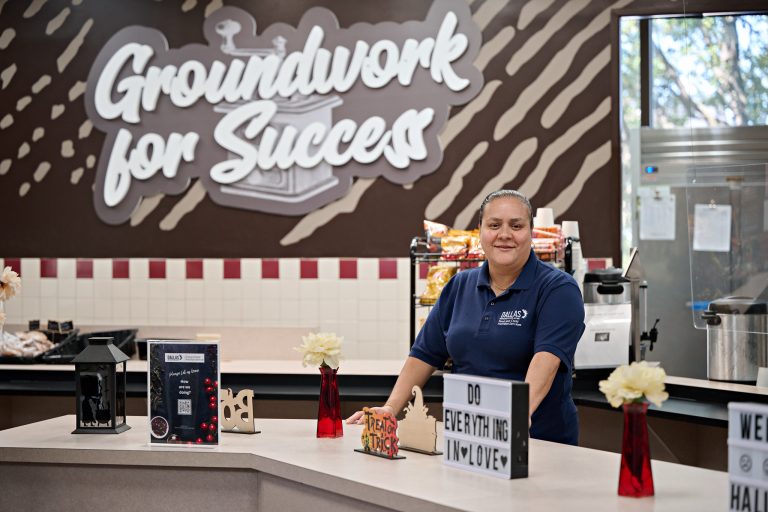Olivia Rodriguez is a staple at the café in the Dallas ISD’s Linus Wright Administration Building. She joined the team in 2017 after years of working in a school cafeteria, where she forged connections with the community and the students because to her, food means family and culture.
Rodriguez started in the Food and Child Nutrition Services Department in 2014 at Leonides Gonzalez Cigarroa, M.D. Elementary School. One of her favorite things about working there was the connection she forged with the students who visited the cafeteria daily.
“The students would always sing to me when it was my birthday,” she said. “The children come up to you and hug you.”
While she misses the school, she said working in the administration building allows her to meet people from all over the district and spend more time with her own children.
Rodriguez is originally from La Moncada, a town in the municipality of Tarimoro in the state of Guanajuato. While she has been in the United States for almost two decades, she carries the memories of her hometown and country in her heart always.
Since leaving Mexico, Rodriguez has established roots in the city and Dallas ISD—her three children, ranging in age from high school to elementary school, all attend district schools.
Keeping her Mexican culture alive is something Rodriguez strives for in her family. Her children speak Spanish, and she and her family often sit down at the table to enjoy traditional dishes. She loves to cook chicken mole with rice.
“I don’t have a special recipe because I always make it more or less remembering how my mom used to make it, because she doesn’t make it anymore,” she said.
Rodriguez doesn’t have a written recipe, because she learned how to make mole from her mom, adding her own personal touch to it. She just knows how much of each ingredient the dish needs—tanteando (estimating the measurements), she said.
One of the things she remembers fondly about Mexico is the celebrations they had in her hometown.
“On Sept. 16, Mexico’s Independence Day, we would participate in parades, where the schools and the community would walk together in unity,” she said.
Rodriguez said there were school bands called la banda de guerra in the parade where they would march in unison with percussion instruments and cornets. She participated in the band as well as danced folklorico music. There was also the student banda de viento, which was a more traditional band, different from the banda de guerra with instruments like the trumpet, trombone, tuba, saxophone, and so on.
She recalls the memories of the excitement of preparing for such celebrations. Her school and community would get together on Sept. 15 for the traditional Grito de Dolores at midnight, which represents the historic event that happened in Dolores, Hidalgo, when Miguel Hidalgo y Costilla rang a church bell and gave the call to arms that began the Mexican War of Independence.
Rodriguez said that it’s important that her children and others know about their rich cultural history because it gives them a sense of belonging and pride, all of which contributes to their self esteem.
One of Rodriguez’s wishes for her children and the children of the district is that they fulfill their dreams and stay safe always. As far as her own dreams, she hopes to return to Mexico someday after her children are grown and she has retired.

